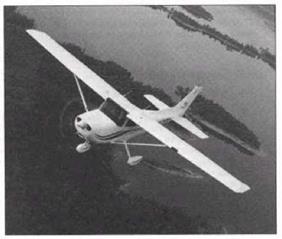The Beloved Cessna
What is it about Cessna airplanes that makes them so beloved? I suppose part of the answer lies in how simply Cessna airplanes are designed. Pull up the cowling on a Cessna 152 trainer, for example, and you’ll see an engine as uncomplicated as any engine larger than a riding lawnmower’s. But that little engine puts out enough horsepower to carry the plane a few hundred miles at a hop or a few dozen times around the airfield (which is how most student pilots learn to fly).
|
|
Turbulence
Clyde Cessna undeniably changed the character of general aviation by manufacturing planer that were iafer than any made before. But in a cruel irony, Ceuna watched a cl ore friend die horribly in an air racing accident in 1933 flying a plane Ceuna himself had designed. Cessna lost his love for flying on that day, though not his love for building airplanes, and from then on did all he could to avoid getting into an airplane.
If the exterior is simple and functional, the interior of most small Cessna airplanes is positively Spartan. Seats are thin-cushioned and, except for sliding closer or farther away from the instrument panel, nonadjustable. The air vents are no more than big hollow tubes that suck outdoor air into the cockpit. In short, most of the smaller Cessnas are made for short flights or pilots who don’t mind a little punishment. Only when you get into the larger, more expensive models do you start to enjoy real comfort.
The Cessna’s instruments are simple, with few distractions to divert a pilot’s attention. The planes are highly responsive to a pilot’s control, and are more forgiving than a parish priest. That doesn’t mean pilots don’t have to be skilled to fly them safely; it does mean they are inherently stable and prone to giving pilots second chances. From their sturdy landing gear capable of shrugging off a student pilot’s bouncy landing to a wing design that goes easy on pilots who fly too slow, the Cessna is a big – hearted plane in a small, plain-Jane package.
|
The Cessna 172 and its nearly identical smaller siblings—the 150 and 52—are the most popular training airplanes in the world. They have become favorites for their forgiving flying characteristics and for their low operating cost. (Photo courtesy of Cessna Aircraft Co.) |
Perhaps my favorite feature of most of the Cessnas is the front window that you can open during flight. Granted, the roar of the 100-plus mile-per-hour wind brings any cockpit small talk to a halt, but under the punishing sun of the southwestern United States, where I did most of my student flying, cooling in the breeze beat shooting the breeze any day.













